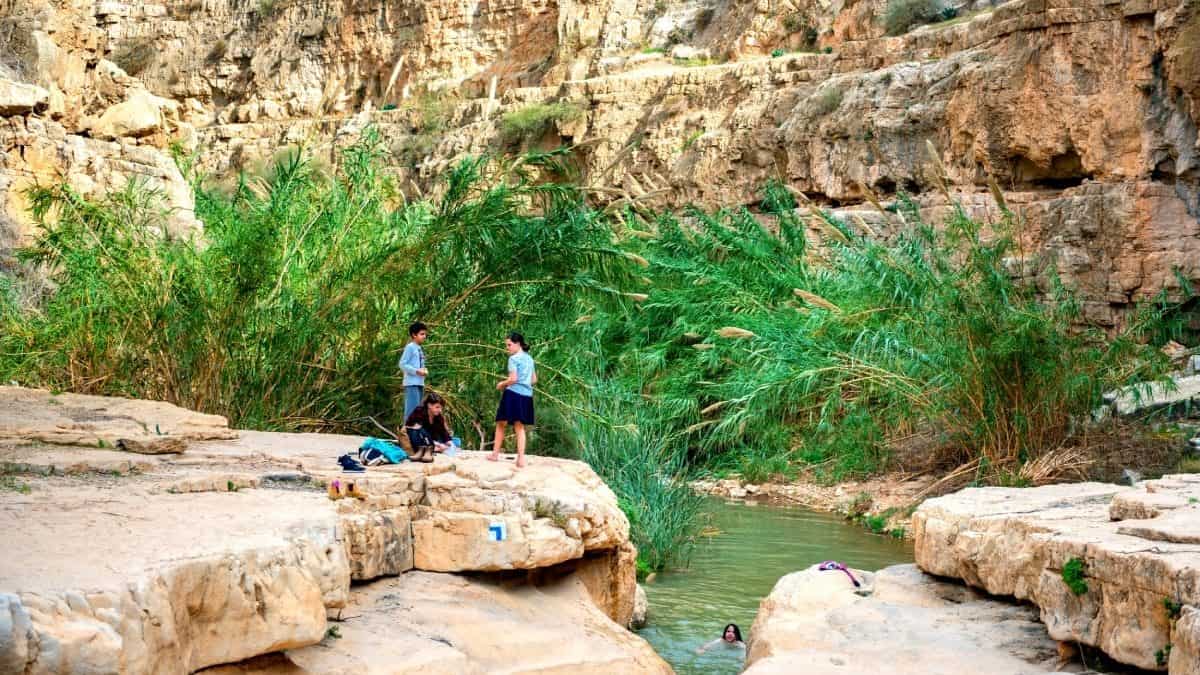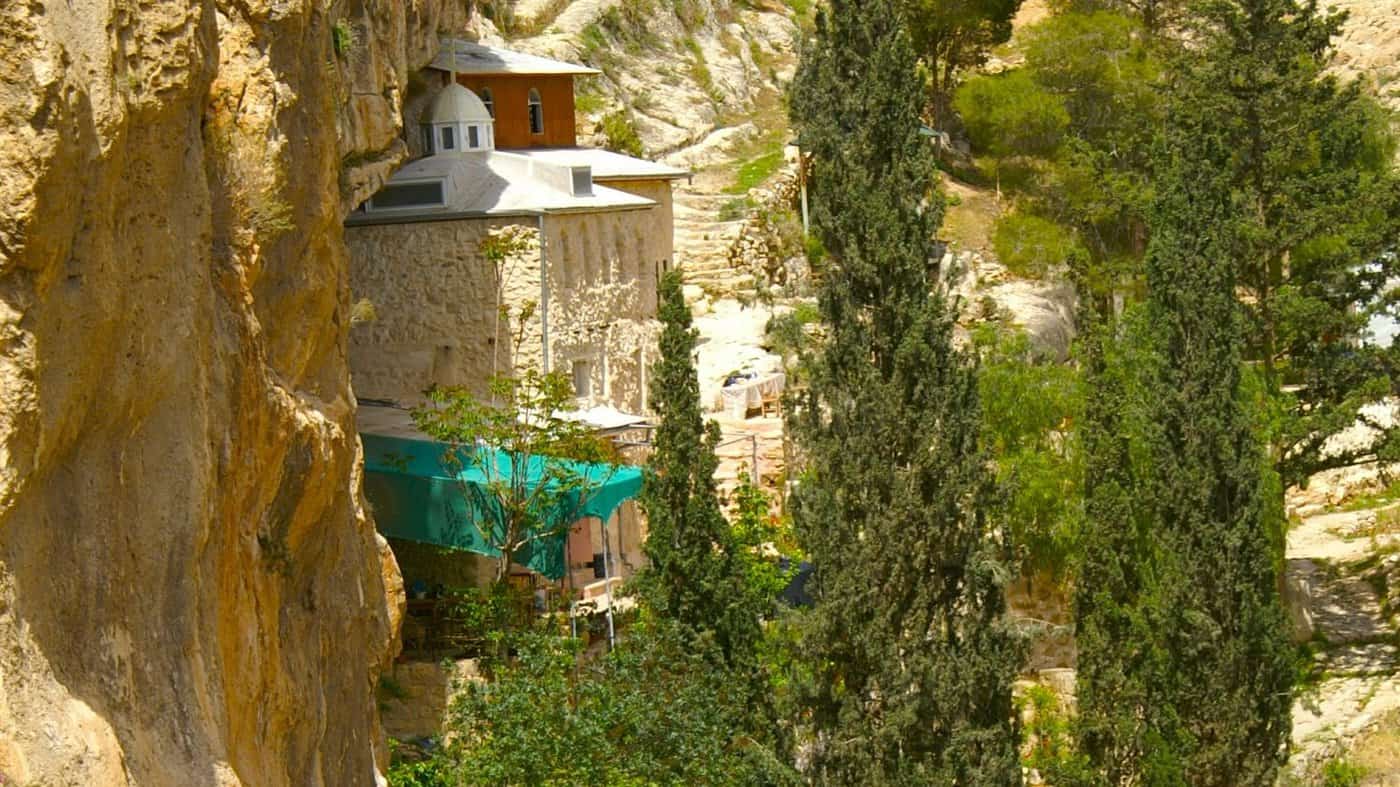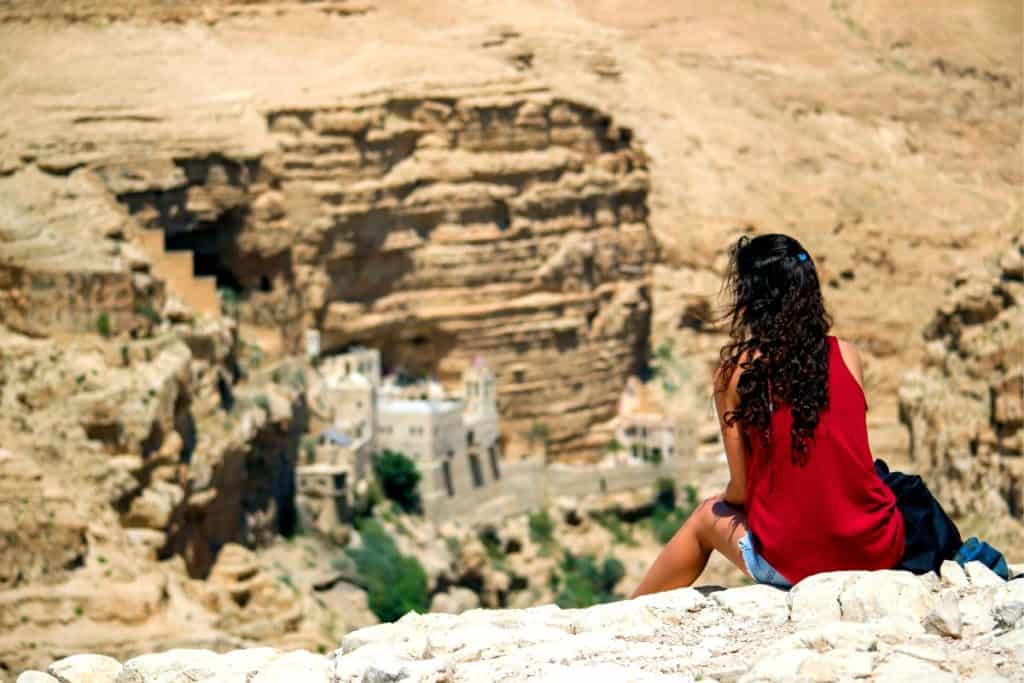In the heart of the Judean Desert, a region known for its harsh landscapes and spiritual significance, the Faran Monastery, also called Faran’s Laura, was established around 330 CE. It holds the distinction of being the first Christian monastery in this ancient desert terrain. Let’s delve into the history and spirituality of this unique Christian site.
Monastery of the Temptation
Faran Monastery – Founding and Restoration:
The Faran Monastery, constructed in Ein Prat Nature Reserve near Ein Perat Spring, is attributed to the devoted efforts of a monk named Chariton the Confessor. He is widely recognized as the pioneer of establishing Monasteries in the Judean Desert. The monastery was designed to serve as a haven for spiritual contemplation and religious devotion.
Ein Prat Nature Reserve

Historic Turbulence and Resilience:
Despite its spiritual significance, the Faran Monastery faced a tumultuous history. In 614 CE, it fell victim to the destructive forces of the Persians, resulting in significant damage. However, a renaissance occurred in the late 19th century when the Russian Orthodox Church was pivotal in its restoration. Today, visitors can still explore the remnants of the Byzantine-era monastery.
Judaean Desert Ultimate Guide
Faran Monastery: A Spiritual Oasis!
Faran Monastery is set within the Nahal Perat nature reserve, offering a tranquil and spiritually enriching environment. It warmly welcomes visitors, provided that appointments are made in advance. This access allows individuals to witness firsthand the spiritual and historical resonance of the monastery.
Judaean Desert Tour

“The Life of Chariton the Confessor” and Monastic Foundations:
The story of Faran Monastery and its founder, Chariton the Confessor, is preserved through “The Life of Chariton.” This text, authored in the sixth century, is the primary source for understanding Chariton’s life and achievements. It is important to note that this account was recorded approximately two centuries after Chariton’s passing, leaving some details open to interpretation.
Monasticism in the Holy Land

Origins of Judean Desert Monasteries:
Establishing monasteries in the Judean Desert by Chariton is a significant historical milestone. However, the exact origins of these nunneries remain somewhat mysterious. No concrete evidence links Christian nuns to similar practices in Jewish sects, such as the Essenes. Chariton’s influence from nunneries in neighboring regions, such as Syria and Egypt, remains unclear.
The “Laura” and Monastic Independence:
The term “Laura” was used to describe the unique form of the monastery that Chariton the Confessor established. This term implies a certain level of independence from the Egyptian nuns and reflects the distinctiveness of the monastic life he introduced.
Chariton’s the Confessor Journey:
According to “The Life of Chariton,” Chariton hailed from a noble family in the city of Iconium in southern Turkey. Following religious persecution, he embarked on a pilgrimage to the Holy Land, beginning after 312 CE. The narrative woven by the author of this account adds a mystical dimension to the beginnings of Faran Monastery.
Legacy of a Monastic Model:
The Faran Monastery is historically situated during the governance of Macarius, the governor of Jerusalem, from 314 to 333 CE. Researchers speculate that its founding occurred around 330 CE. Cyril of Scythopolis suggests that the monastery derived its name from a nearby village with the same name. Still, other researchers argue that the source is the ancient name of the location, the Pheretai ravine.
Faran Monastery – The Monastic Lifestyle:
Faran Monastery belonged to the “Laura” type, characterized by a blend of seclusion and communal living. It combined a solitary existence in separate cells during the week with a congregation for mass ceremonies and shared weekend meals. Hariton introduced rules for his monks, emphasizing values such as love for others, helping the poor, and welcoming strangers.
Monastic Independence:
Monks had an independent space in their cells but took turns with various roles and responsibilities. Hariton’s emphasis on manual labor and open-hearted charity redefined the values of the nunnery. His principles influenced the development of future monasteries in the Judean Desert, leaving an enduring legacy of spirituality.
The Faran Monastery’s remarkable history, spiritual significance, and resilience continue to captivate those who seek a deeper understanding of early Christian monasticism in the ancient landscapes of the Judean Desert.







